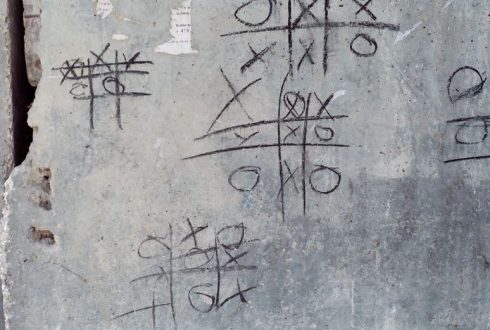A HISTORICAL association has called for the preservation of Santiago de Compostela’s historical carvings of noughts and crosses.
The association first published findings of the games in 2015, following widely shared photos on social media of the ancient game.
Thereafter, eagle-eyed residents started spotting other carvings in the Galician city in its plazas, fountains, and buildings.
Some of the carvings have been dated to the 16th century.

There are thought to be at least 200 games inscribed into walls throughout the city, providing a unique insight into the city’s history.
Luis Leclere of Colectivo A Rula, told the Guardian: “They’re hidden in plain sight. We’ve never heard of anything like the concentration of games we have here.”
Carvings can be seen on all of the city’s main plazas, apparently carved out during festivals or public gatherings while one game was found carved into the clock tower of the cathedral, most likely by bell ringers looking to pass the time.
According to Leclere, ‘the presence of the games reflects the deep inequality in the city at the time.’
The game is ancient, with variations found in ancient Egypt around 1300 BC while an even earlier version of tic-tac-toe was played in the Roman Empire, in the first century BC.
READ MORE:
- Pressure mounts for Spain to investigate deaths of 23 migrants at Melilla border
- LATEST: What are the Covid-19 rules for travellers arriving in Spain?
- U-TURN CAMPAIGN: Plea as petition for expat drivers in Spain nears 5,000 signatures
Click here to read more News from The Olive Press.








